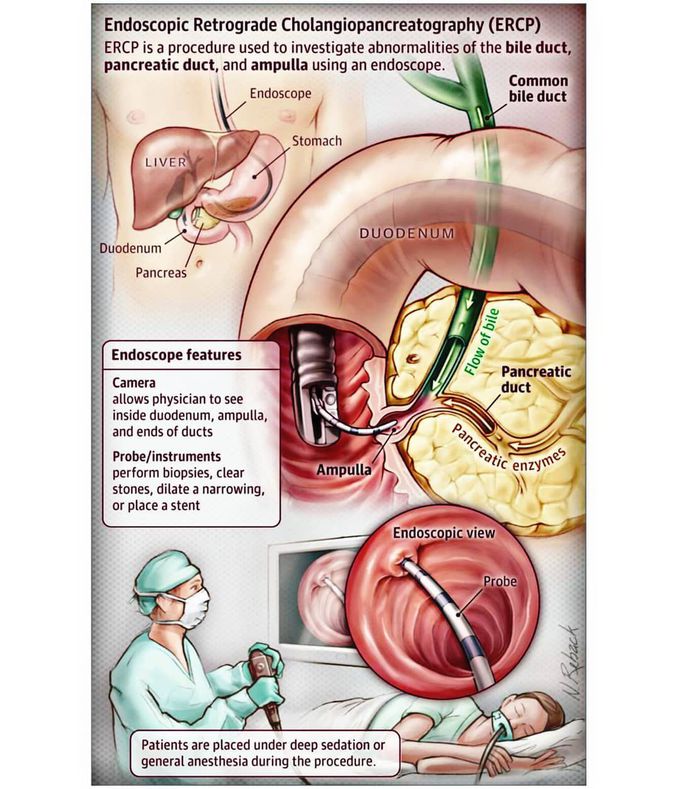


𝐄𝐧𝐝𝐨𝐬𝐜𝐨𝐩𝐢𝐜 𝐫𝐞𝐭𝐫𝐨𝐠𝐫𝐚𝐝𝐞 𝐜𝐡𝐨𝐥𝐚𝐧𝐠𝐢𝐨𝐩𝐚𝐧𝐜𝐫𝐞𝐚𝐭𝐨𝐠𝐫𝐚𝐩𝐡𝐲(𝐄𝐑𝐂𝐏)
𝐄𝐧𝐝𝐨𝐬𝐜𝐨𝐩𝐢𝐜 𝐫𝐞𝐭𝐫𝐨𝐠𝐫𝐚𝐝𝐞 𝐜𝐡𝐨𝐥𝐚𝐧𝐠𝐢𝐨𝐩𝐚𝐧𝐜𝐫𝐞𝐚𝐭𝐨𝐠𝐫𝐚𝐩𝐡𝐲(𝐄𝐑𝐂𝐏) is performed by gastroenterologists or surgeons to evaluate the bile duct, pancreatic duct, and ampulla. Bile and pancreatic enzymes are released into the small bowel to assist digestion. Bile flows from the liver, is stored in the gallbladder, then flows through the common bile duct. Similarly, pancreatic enzymes flow from the pancreas through the pancreatic duct. The ampulla is the confluence of the biliary and pancreatic ducts. Both of these ducts can become blocked or narrowed by stones, tumors, or inflammation. How ERCP Is Used The ERCP procedure is used to investigate abnormalities of the common bile duct, pancreatic ducts, and ampulla. It can also be used to perform certain therapeutic interventions. The procedure is performed with a specialized endoscope, a long, maneuverable tube with a camera that passes through the mouth, esophagus, and stomach to work within the duodenum. A miniaturized video camera on the tip of the endoscope allows the doctor to see a greatly magnified view of the inside of the gastrointestinal tract on a video monitor. Images of the bile and pancreatic ducts are made by injecting a special liquid (a radiocontrast agent) into the ducts while taking x-rays. Specialized instruments are passed through the endoscope to perform biopsies, retrieve stones, dilate a narrowing, or place a stent (a short hollow tube that allows bile or pancreatic fluid to flow past a narrowing). . Sources: NIH state-of-the-science statement on endoscopic retrograde cholangiopancreatography (ERCP) for diagnosis and therapy. NIH Consens State Sci Statements. 2002;19(1):1-26. https://jamanetwork.com
Source: https://www.instagram.com/p/BqbP4zjhmzX/?utm_source=ig_share_sheet&igshid=5y0yea6zqfsa
